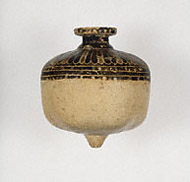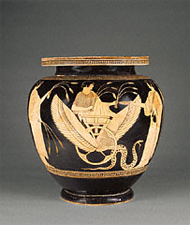Grades/Level: Upper Elementary (3–5), Middle School (6–8) |
||||||||||||||||||
Activity Overview |
|
|||||||||||||||||
Use this activity for visiting the Getty Villa's Herb Garden and the Wine in Antiquity gallery (Gallery 213). Students find and identify plants in the Getty Villa's gardens and depicted on artwork inside the Museum and learn how these plants were incorporated into myths and everyday life in antiquity. |
||||||||||||||||||
Learning Objectives |
||||||||||||||||||
Students will be able to: |
||||||||||||||||||
Materials |
||||||||||||||||||
Download the documents below to use for your pre-visit activity, visit to the Villa (student worksheet), and post-visit activity. Links to images of works of art that students will see at the Villa are also provided. |
||||||||||||||||||
|
||||||||||||||||||
Activity Steps |
||||||||||||||||||
Below is a summary of the activities contained in the downloadable materials above. Pre-Visit Activity: Students listen to a myth featuring a plant and discuss the literary elements of a myth. They also look at images of plants they will see at the Getty Villa, both in the gardens and in the works of art. Student Worksheet: At the Villa, students follow instructions on their activity sheet to choose a plant in the Getty Villa's Herb Garden; describe how the plant looks, smells, and feels; and make a drawing of it. Students then learn about the roles of plants in ancient myths before examining images on a sarcophagus that depicts the process of wine-making. Post-Visit Activity: Students research myths connected to the plants they have seen at the Getty Villa, then write an original myth about their favorite plant. More advanced students can write an alternative ending to a plant myth of their choice and reflect on how the ending changes the message and meaning of the myth. |
|
|||||||||||||||||







